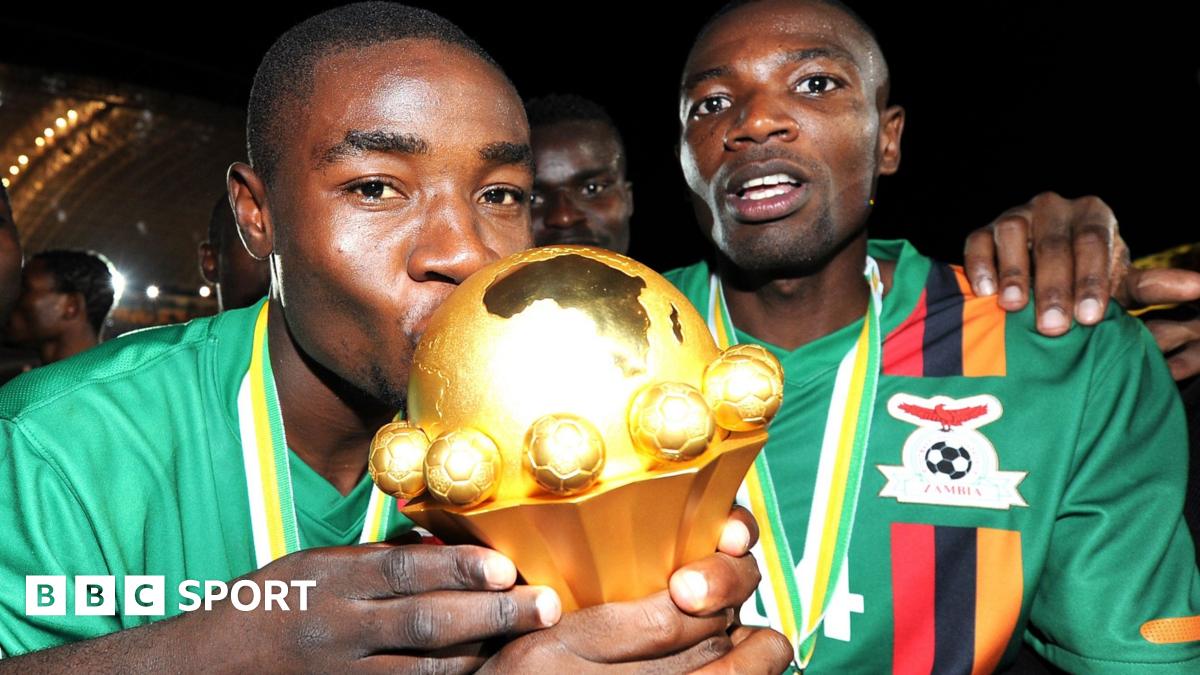Physical Address
304 North Cardinal St.
Dorchester Center, MA 02124
Physical Address
304 North Cardinal St.
Dorchester Center, MA 02124

For the people of Zambia, its football team is a beacon of hope.
The price of copper, the country’s main export, has nearly halved in the past four years, hurting the economy. Income has dropped dramatically.
President Frederick Chiluba declared a national state of emergency, saying a coup plot against him had been uncovered.
The football team though is a source of pride.
They are known as Chipolo-polo, the Copper Bullet.
It is a nickname derived from Zambia’s primary industry and the attacking, aggressive style of the team.
The team recently returned from a 3-0 win over Mauritius in an Africa Cup of Nations qualifier.
They have an eight-year unbeaten home record and a band of brothers at the peak of their powers.
Far away from the Zambians, USA ’94 beckoned.
To get there they had to top a qualification pool of three, beating Morocco and Senegal in home-and-away ties.
First, far from Senegal.
As usual, a DHC-5 Buffalo military plane will take them there.
With the recession eating into its funding, the football association cannot afford commercial flights.
Instead the DHC-5 Buffalo, an 18-year-old twin-propeller aircraft, the first models used in the Vietnam War, will scour the vastness of Africa.
It is not made for long trips to have to make frequent stops to fill up with fuel.
And it shows its age. Six months ago, while flying over the Indian Ocean to play Madagascar, the pilot actually told the players to put on their life jackets.
When the players based in the country of Zambia went to the airfield outside the capital city Lusaka to board, Patrick Kangwa, a member of the national team selection committee, met with them.
He told 21-year-old midfielder Andrew Tembo and third-choice goalkeeper Martin Mumba that they did not need to travel. They were dropped from the squad.
Pride was hurt and heated words were exchanged on the tarmac.
It was a standard choice decision, but, on this day, it decided who would live and who would die.
Those on board faced a daunting itinerary. The Buffalo plans to stop and refuel in the Republic of Congo, Gabon and Ivory Coast before arriving in Dakar, the capital of Senegal.
In fact, it never made it past the Fog.
The Zambian government has yet to release a report on what happened to the flight.
But in 2003, Gabonese authorities said that almost immediately after take-off from the capital Libreville, the plane’s left-hand engine stopped working.
The pilot, tired from flying the team back from Mauritius the previous day, shut down the right engine without error.
The heavy plane, suddenly without power or lift, plunged into the sea a few hundred meters off the coast of Gabon, killing all 30 people on board.
Back in the Netherlands, Bwalya, his run forgotten, saw the news he already knew break on television.
“There was a woman reading the news and the Zambian flag was behind her,” he recalled.
“He said, ‘the Zambian national soccer team traveling to Dakar, Senegal, for a World Cup qualifier crashed. No one survived’.
“The ambition – as a young man, the brothers, the teammates, the team spirit – disappeared in one day. But it seems like yesterday, it’s very clear in my mind.”
Kangwa – the official who sent the selected players on their way to Lusaka – flew to Gabon.
In one stroke, his role changed from selecting players to identifying their corpses.
“The bodies were in the water for a long time so some started to change state,” he said on the BBC World Service podcast Copper Bullets.
“I have to try and say, who is this, who is this?
“After that, I cried, we all cried. None of us thought that we would find ourselves in a place where we would see our comrades torn apart.
Meanwhile, Bwalya arrives in Lusaka, where the truth sinks in.
“We went to receive the bodies, and, one by one, they took the coffins from a plane to take them to Independence Stadium,” he said.
“That’s when I knew I wasn’t going to see the team – the one I had traveled on the same plane with a few months ago – again.”
On 2 May 1993, more than 100,000 Zambians came to the Independence Stadium, where Zambia plays their home matches, for a funeral.
Most of the attendees stayed in the streets because the capacity of the stadium was only 35,000.
After an all-night vigil and a memorial service the players were laid to rest in a semi-circle of graves.
Each grave has a tree planted in front of it in a memorial garden called Heroes’ Acre, 100 meters north of the stadium.
One commemorates the life of the legendary Godfrey Chitalu, a fictional goalscorer turned team coach.
Another was dedicated to Bwalya’s roommate, David ‘Effort’ Chabala, who kept a clean sheet in Italy’s Olympic demolition.
Twenty-three-year-old Kelvin Mutale was also among the dead. Two-footed, good in the air and two years into his international career, he emerged as Bwalya’s strike partner and recently scored all three goals in the win over Mauritius.
“Derby Makinka was one of the best players Zambia has ever produced at number six,” Bwalya recalled. “He’s a tank.
“We have a world-class player in every position.
“I can still feel being in the room with the guys, I can still see the guys, how happy they are, and it’s a good past.”